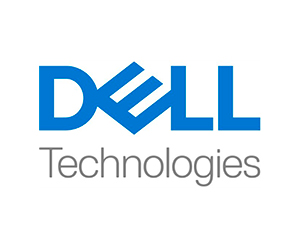LEARN MORE: See what Dell can do for your federal agency’s technology needs.
A New Decade Means a New Cloud Strategy
To recognize the emergence of the multicloud strategy, federal agencies have shifted focus. The updated Cloud Smart policy, released by the Office of Management and Budget in 2018, integrates the last 10 years of advancement in cloud technology into policy.
Instead of treating the cloud as a repository for data and services, as the initial document did, the new guidelines lay out a path for agencies to build customized cloud solutions that achieve specific solutions.
Chehreh says that the Federal Emergency Management Agency provides just one example of how this policy plays out in the field.
“Look at FEMA. They’ve created portable, tactical clouds in FEMA response vehicles that can speed up the response to a disaster,” he says. “At the Department of Defense, they’re able to use the cloud for special ops, or for more everyday solutions like predictive maintenance on vehicles.”
READ MORE: These cloud management solutions can help you improve your cloud environment.
Behind the Clouds: The Technologies That Make IT Work
Like FEMA and DOD, most agencies are creating hybrid and multicloud systems that boost their productivity where they need it most. While the architecture is much more complex, new technologies are simplifying the process.
The Dell EMC VxRail is one of the technologies making a scalable, multicloud environment possible for government agencies.
“Essentially it’s a fully integrated solution built for multiple functions — storage, networking, computing — and it’s all compatible with VMware,” says Chehreh. “You can start with one, and as you test solutions, easily add to expand operations. The VxRail is the foundation for the Dell Technologies Cloud and integrates seamlessly into a multicloud environment.”
VMware is a critical piece of the puzzle. “Dell Technologies Cloud removes cloud complexity by offering consistent operations and infrastructure across IT resources regardless of location — private and public clouds as well as the edge,” says Chehreh. “It combines the cloud IT infrastructure of Dell EMC and cloud software from VMware, offering the ability to control all of your clouds.”
Another way agencies are using VMware and Dell EMC cloud systems together is to create bidirectional cloud connections, which allow users to quickly push or pull massive amounts of data to or from the cloud.
“An Air Force base recently experienced a devastating flood, and they lost their physical data center,” Chehreh explains. “If they had had a bidirectional cloud connection, they could have quickly uploaded all that information to the cloud provider and then download it again once they rebuilt their onsite location. A bi-directional connection allows customers a lot of flexibility.”
Keep Multicloud Environment Focused, Simple
As federal agencies move into a multicloud world, Chehreh advises agencies to approach the design of a custom solution by looking at three critical “laws”:
- The Laws of Physics: Look for the center of gravity. What are your agency’s requirements? Do you need data at the edge, or within the agency itself? It’s easier to bring the cloud to the data than the other way around.
- The Laws of Economics: Embrace automation. You don’t want a virtual data center to cost you more than a traditional data center, but it can be much less with today’s technologies.
- The Laws of the Land: Federal agencies have to implement compliance requirements and controls around certain data sets to ensure proper data storage, privacy and access control. Any solution you implement needs to follow these rules as well as provide safety and security.
Overall, Chehreh is looking forward to what the cloud can bring to agencies next.
“Cloud computing isn’t what it was 10 years ago,” he says. “Today, modern engineering and the rise of edge computing are going to power so many use cases from the portable to the tactical, it’s going to be extraordinary.”










